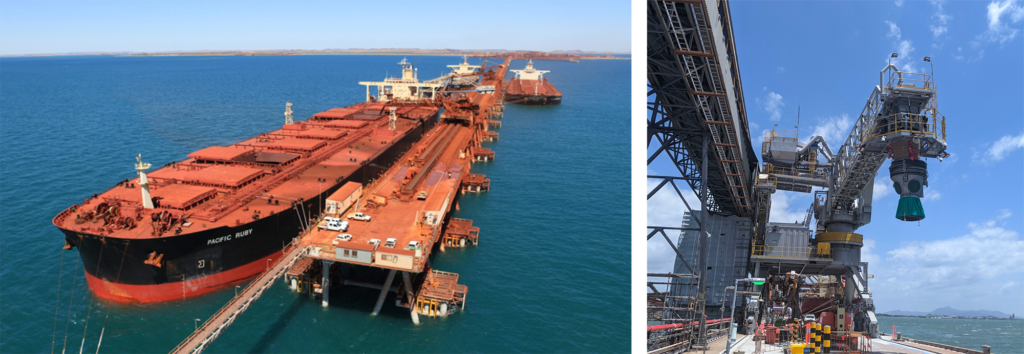Dry bulk marine terminals are vital to global trade, and keeping their design principles up to date is essential. Recently, PIANC approved the development of the WG261 guidelines, an important update to the original WG184 document. This revision will address changes in the industry, including new technologies and sustainability goals, ensuring the guidelines remain relevant and practical. ASPEC is proud to play a key role in this process, with Richard Morgan leading the effort as chairman of the WG261 committee. Read on for more.
We are excited to announce that PIANC has approved the development of the WG261 guidelines, an update to the original WG184 document titled “Design Principles for Dry Bulk Marine Terminals.” This update is a significant step forward in ensuring that the guidelines remain relevant and effective in addressing the evolving needs of the industry.
Background
PIANC, the World Association for Waterborne Transport Infrastructure, is a global forum where professionals collaborate to provide expert advice on cost-effective, reliable, and sustainable infrastructures. In early 2016, PIANC formed Working Group (WG) 184 to address the lack of comprehensive guidelines for planning and designing dry bulk marine terminals. These terminals handle some of the largest vessels globally, with approximately 4.55 billion tonnes of bulk solid cargo transported by sea annually. The WG184 report, released in March 2019, serves as a modern reference covering current technology, vessel types, and bulk handling equipment.

The Need for an Update
During the PIANC APAC 2022 conference in Melbourne, the need to update the WG184 guidelines was discussed extensively. The industry has seen significant developments, and new guidelines such as WG235 (Oceangoing Ship Data for Port Planning and Design) and WG211 (Guidelines for the Design of Fender Systems) have emerged, superseding certain information in WG184. Additionally, the push towards net-zero scenarios will impact the bulk shipping fleet and bulk commodity export ports worldwide, necessitating the repurposing of existing terminals.
WG261: The Update
The newly approved WG261 guidelines aim to refine and enhance the original WG184 document. This update will address overlapping information across different chapters, upgrade the materials handling section, and incorporate the latest industry developments. The goal is to provide a comprehensive, up-to-date reference that supports effective, efficient, and environmentally sustainable development of dry bulk marine terminals.
Leadership and Contributions
We are proud to highlight the leadership of Richard Morgan, who serves as the chairman of the WG261 committee. Richard’s extensive experience and dedication have been instrumental in driving this initiative forward. Additionally, Grace Go, the secretary and young engineers’ representative, brings valuable insights and perspectives to the committee, ensuring that the guidelines reflect the needs of the next generation of engineers.
Conclusion
The approval of the WG261 guidelines marks a significant milestone in the ongoing effort to provide robust, relevant, and sustainable guidelines for dry bulk marine terminals. Aspec Engineering is honored to be a major contributor to this important work, and we look forward to the continued collaboration and innovation that will shape the future of waterborne transport infrastructure.
Stay tuned for more updates as we progress with the development of the WG261 guidelines.
